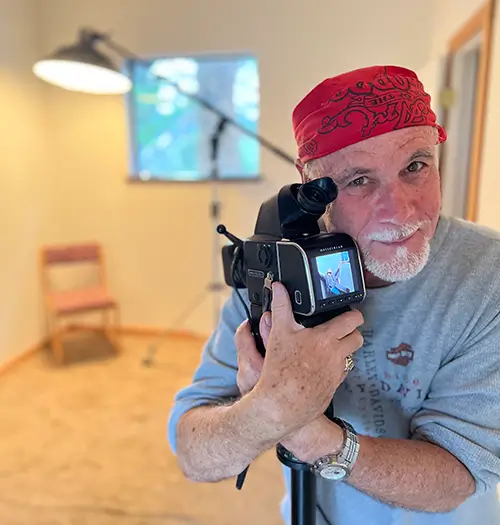Consider portraiture as cultural archaeology: excavating individuality to preserve the brief trace of human presence within an environment shaped by geologic time—telling stories that mirror worldwide themes of transformation where land, labor, and identity press against each other like tectonic plates, shifting slowly until—suddenly—rupture. Appropriately, the Point Reyes Peninsula straddles the San Andreas Fault.
Point Reyes Station—a town so small it has only one stop stoplight—recently installed—is already coming undone by forces of wealth and displacement. As the gateway to Point Reyes National Seashore and Tomales Bay, forty miles north of San Francisco, an influx of outsiders and an economy tilting toward tourism are hollowing out its working core. A compelled legal settlement with the National Park Service and The Nature Conservancy has mandated the removal of time-honored cattle ranches, dairy farms, and oystering operations—some established by Mexicans and European immigrants long before California statehood, others by descendants of the Coast Miwok people. For locals, the cost of transformation is not abstract: barns converted into vacation rentals, businesses shuttered, workers displaced. For conservationists, it’s ecological restoration. For families who built livelihoods here generation after generation, it’s cultural erasure.

Bruce Stevens © Tom Zimberoff
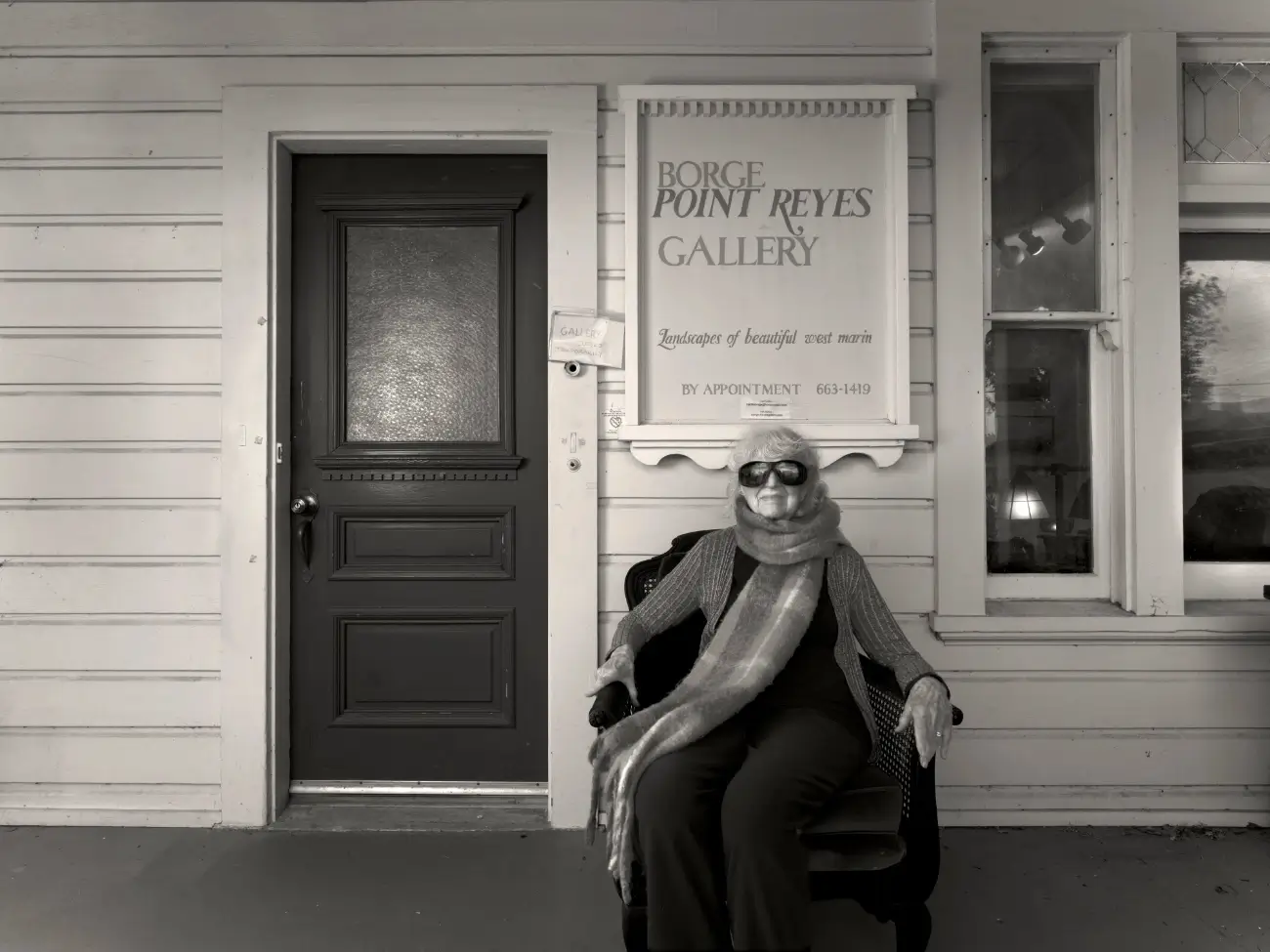
Martha Borge © Tom Zimberoff

Andrew Nichols © Tom Zimberoff
Since first visiting in 1987—including the equally tiny towns of Inverness and Marshall that hug the Tomales Bay shoreline—I have watched these changes unfold. I hope to join some of the local people’s efforts to preserve the region’s historical and cultural legacy by creating these portraits of local inhabitants whose lives are inseparable from this treasured littoral landscape.
Some of the people I have—and will continue to—photograph in this series will be familiar characters in any small town: the guy who dances on street corners and talks to the moon, the woman in a feathered hat at the grocery store—maybe, too, the scion of a dairy-farming family that’s worked this land for more than a century, or the granddaughter with Coast Miwok antecedents who still harvests oysters. The population spans poverty, inheritance, and eccentricity. Each portrait in this series pins someone down within the larger story of belonging to a place in flux.

Bruce Mitchell © Tom Zimberoff
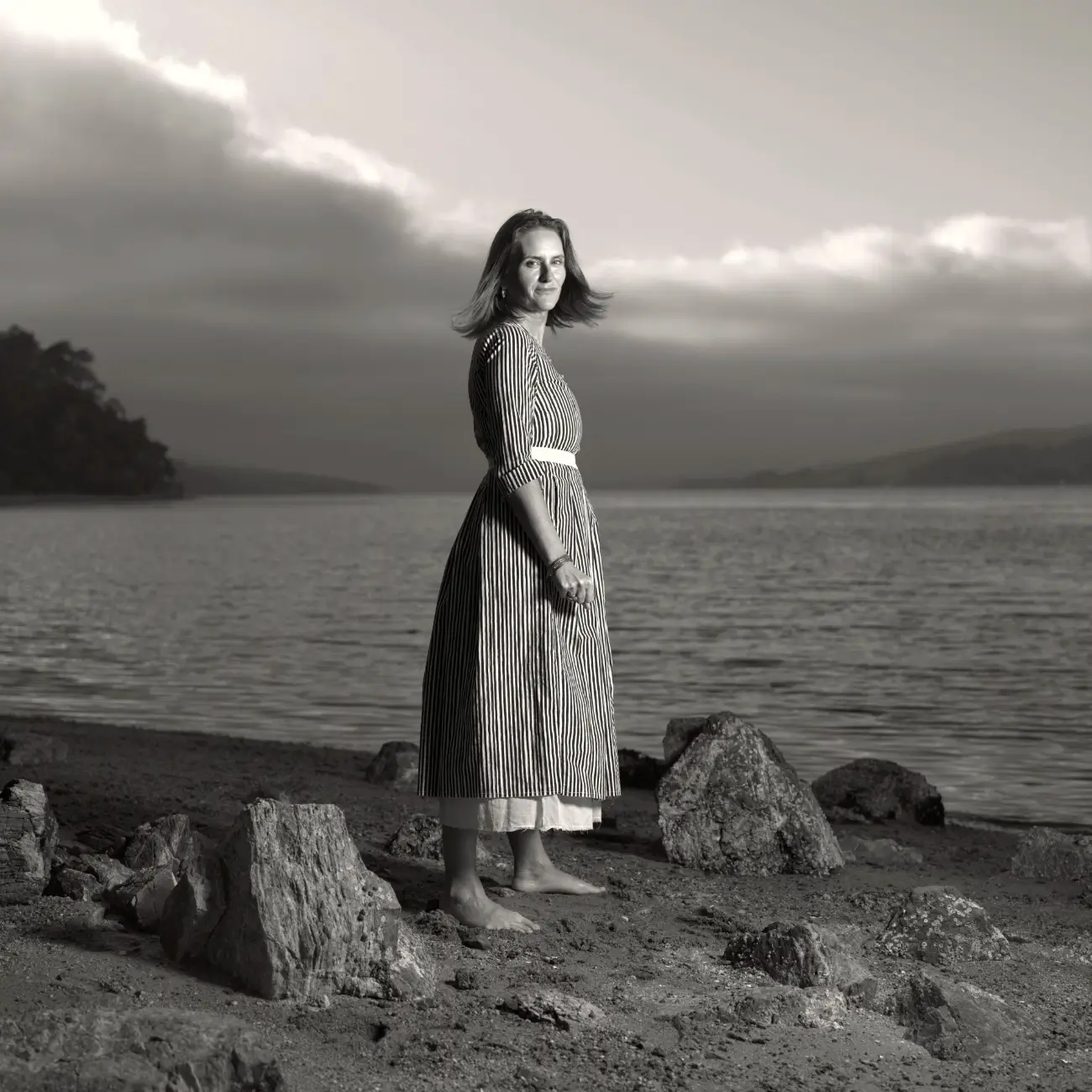
Dakota Whitney © Tom Zimberoff
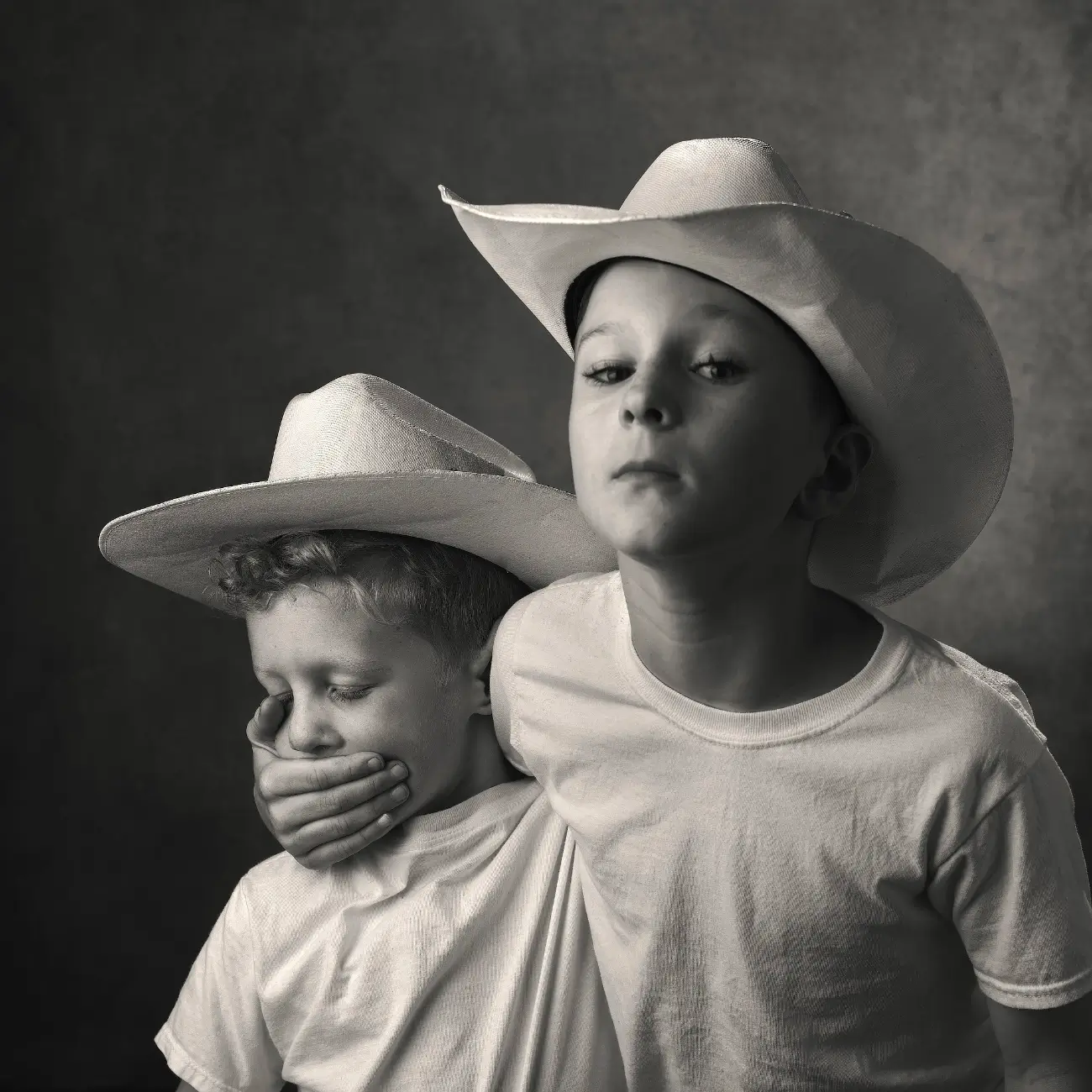
Enzo and Cooper Raffo © Tom Zimberoff
For both aesthetic and practical reasons, some of these portraits employ a neutral backdrop; others are made within a workplace or a home. But as often as I can, I situate people within the contested marshes, mudflats, and meadows surrounding Tomales Bay and the Point Reyes National Seashore. There, the entanglement of lives with landscape is undeniable. Taken together, the Point Reyes portraits reveal a community balanced between resilience and uncertainty, building a collective memory on the edge of change.
I cannot—and would not—photograph everyone in a regional population approaching 2,500, but I have identified several hundred who have left their stamp. I intend to expand this series to represent the breadth of the community: elders, children, and newcomers alongside families rooted here for generations, tying together diverse cultural backgrounds. By including a landscape/seascape component, I aim to illustrate the fragility of people’s right to remain alongside the fragility of the environment itself.
This story is not an elegy but an act of cultural affirmation—ensuring that the memory of people and place will be celebrated. Through these portraits, the story of rural gentrification, environmental policy, Indigenous displacement, and the precarity of working-class communities under global capital will echo across America. The images of the people themselves, rendered with both documentary weight and—equally important—aesthetic beauty, will give these issues a visual presence powerful enough to resonate beyond the immediate locale, compelling others to notice what is at stake.
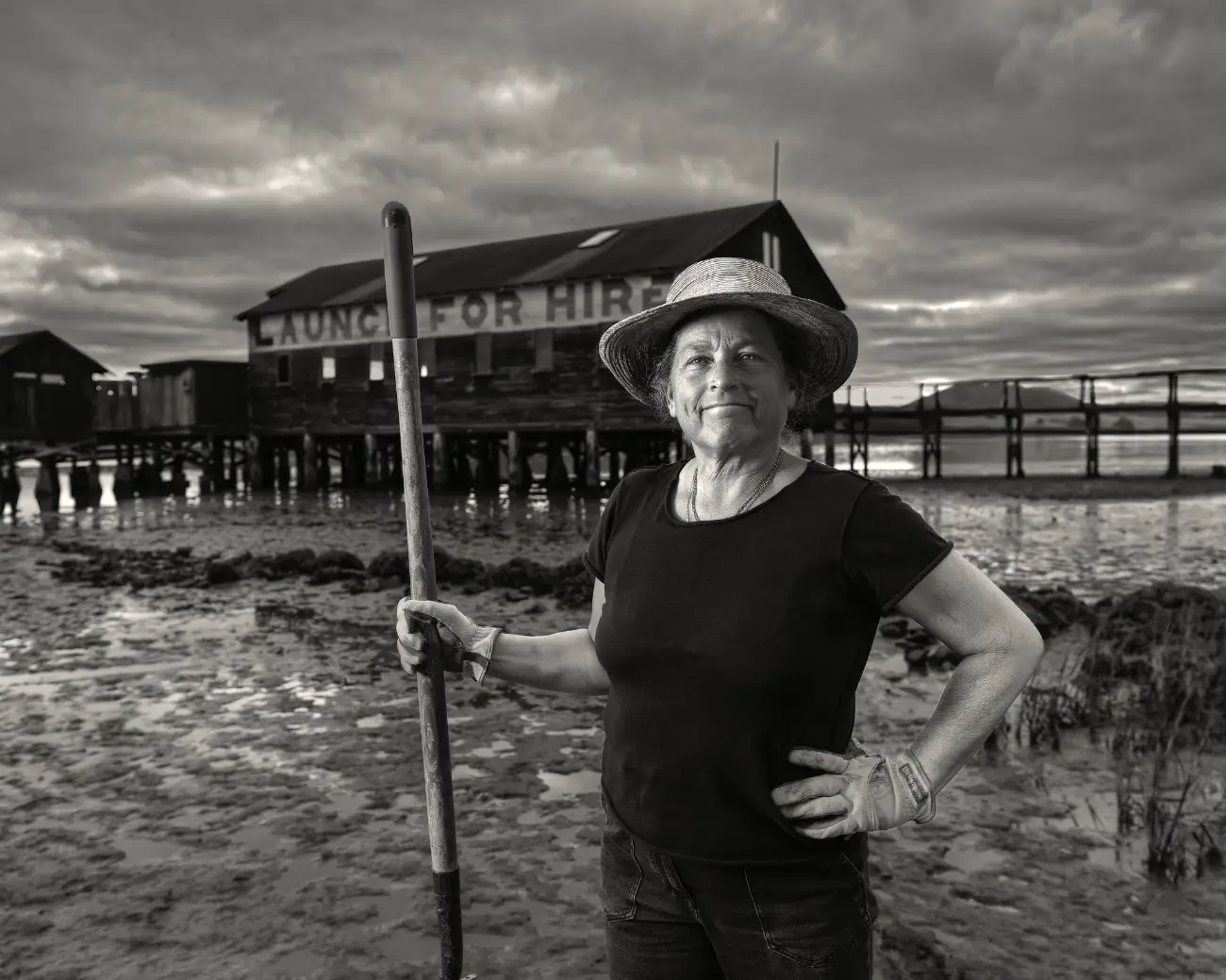
Madeline Nieto Hope © Tom Zimberoff
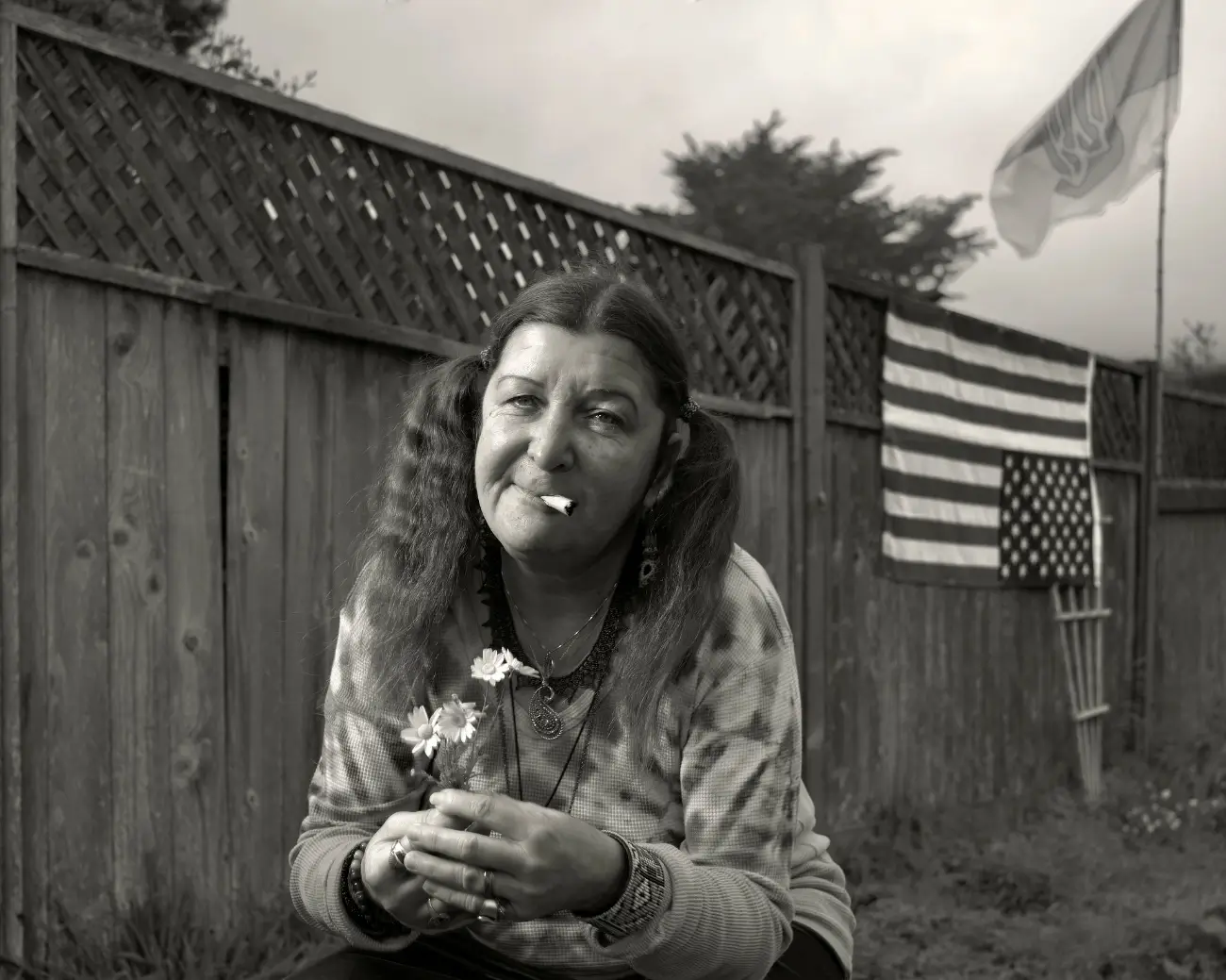
Maddy Sobel © Tom Zimberoff
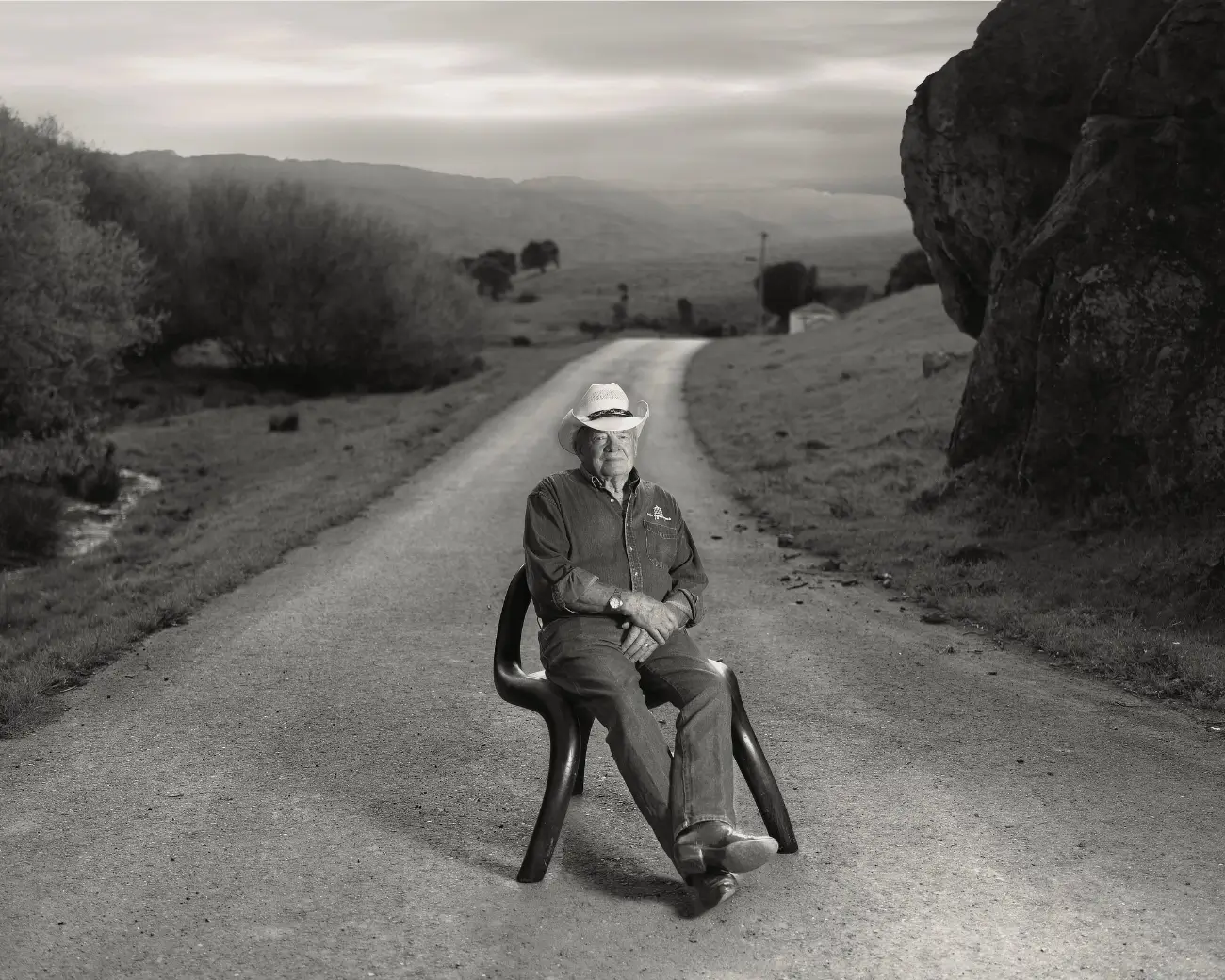
Steve Doughty © Tom Zimberoff
Tom Zimberoff is a classically trained clarinetist who studied music at the University of Southern California before pivoting to photojournalism. In association with the legendary Sygma Photo Agency, he covered hundreds of historical and breaking news stories worldwide.
Zimberoff’s career took off — literally – with a helicopter carrying the military dictator of Panama. Tom was a stowaway. As a young freelancer trying to make his bones, hoping to grab exclusive photos of the inscrutably camera-shy ruler, General Omar Torrijos, he gave little thought to the possibility of being invited to exit the aircraft before it landed. It turned out to be an entrée to more than twenty years of shooting for Time magazine.
Portraiture is his passion. His first two were Marx and Lennon: Groucho and John. He went on to photograph hundreds more portraits, including magazine covers depicting cultural icons from Ava Gardner to Steve Jobs, plus two sitting American presidents for the covers of Time and Fortune. His portraits can be found in private collections and museums, including the National Portrait Gallery in London, the Los Angeles County Museum of Art, and the San Francisco Museum of Performance + Design.
Zimberoff shot advertising campaigns, too, for Fortune 500 companies, the U.S. Navy, and Hollywood movie studios. His film is archived at the Briscoe Center for American History at the University of Texas at Austin.
Zimberoff created PhotoByte®, the first successful business-management software for photographers. He founded a venture-funded company during the “dotcom bubble” in Silicon Valley and later joined the Start community of startups affiliated with Stanford University. He wrote the book, so to speak, about the business side of photography called Photography: Focus on Profit (Allworth Press, 2002). It was used to teach at colleges across the country. He also wrote and illustrated a two-volume set of coffee-table books titled Art of the Chopper’ about the custom motorcycle culture he calls “haut moteur,” with biographies and photographs of its proponents. His photographs, plus thirty of the actual motorcycles featured in the books, were exhibited at the Clinton Presidential Library & Museum in 2009 before the installation traveled to other museums.
Born in Los Angeles and raised commuting with his parents between LA and Las Vegas, where his father worked as a musician and his mother sold couture to showgirls, Zimberoff now lives and works in San Francisco.
www.zimberoff.com
All About Tom Zimberoff
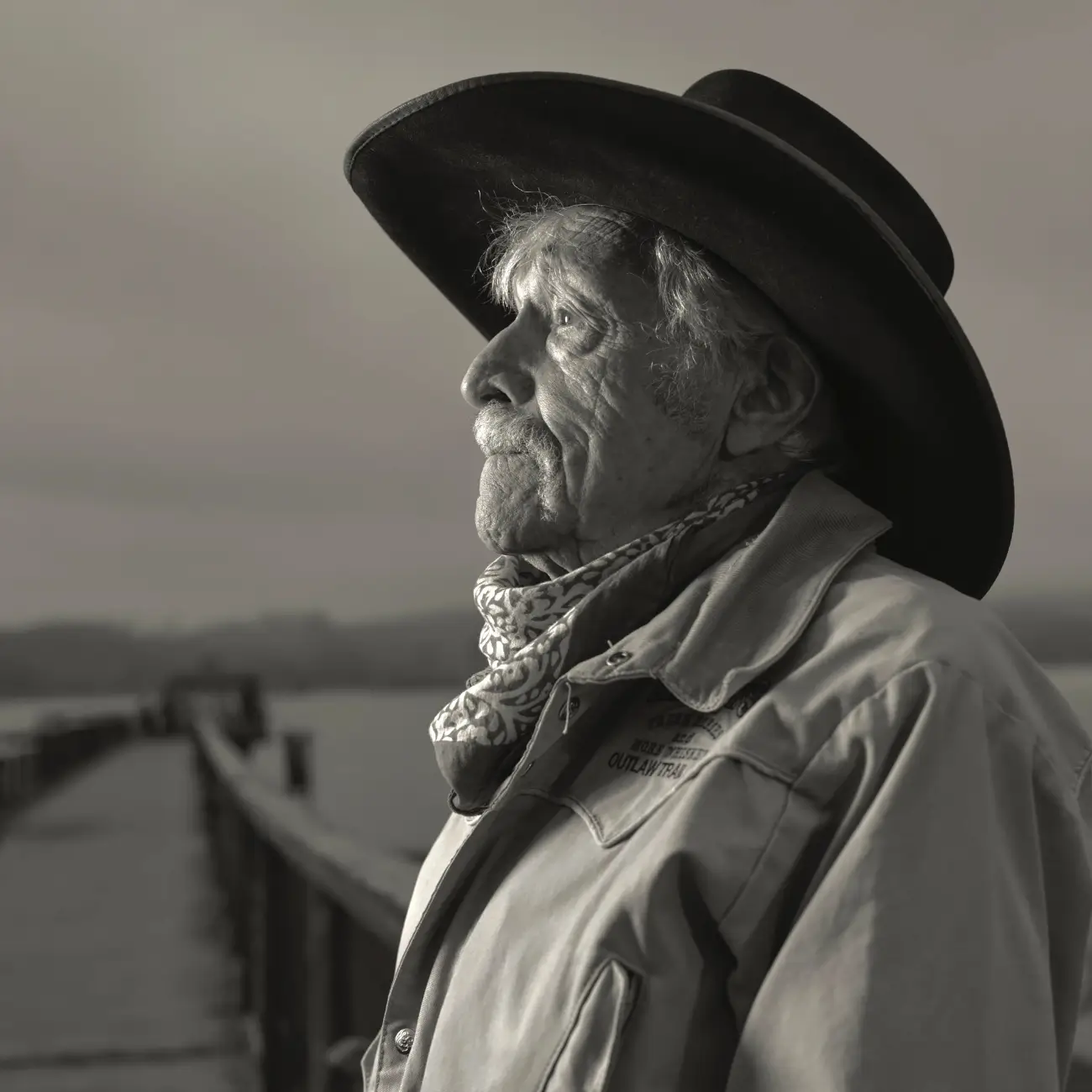
Ramblin' Jack Elliott © Tom Zimberoff

Eli Geller © Tom Zimberoff

Terry Noordbye © Tom Zimberoff
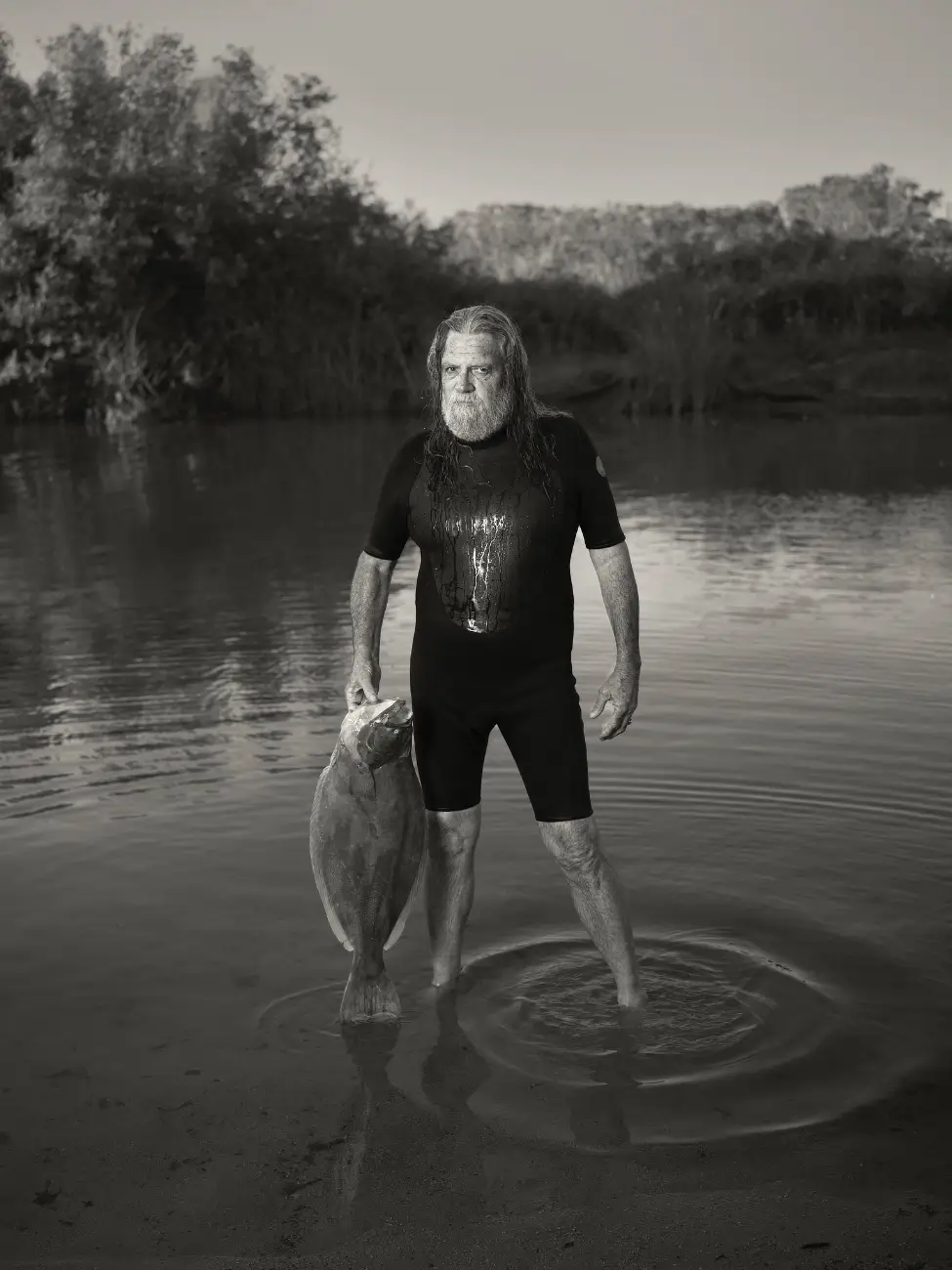
David Cook © Tom Zimberoff
